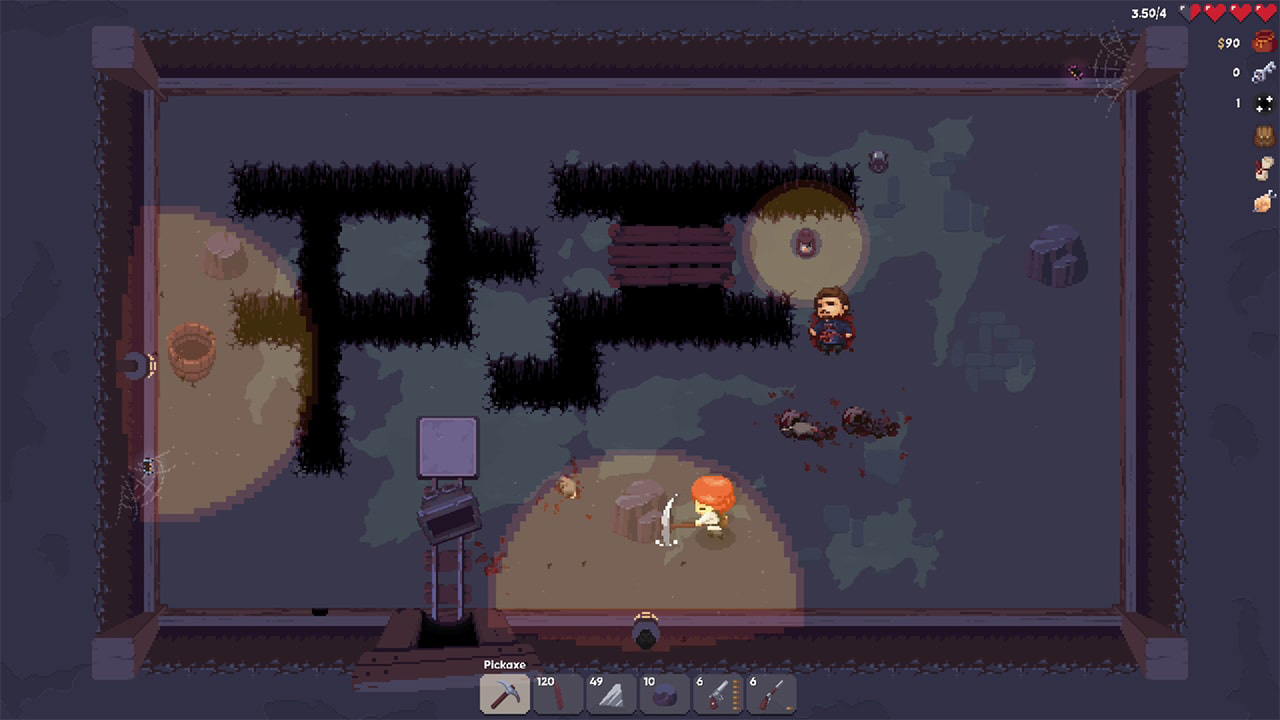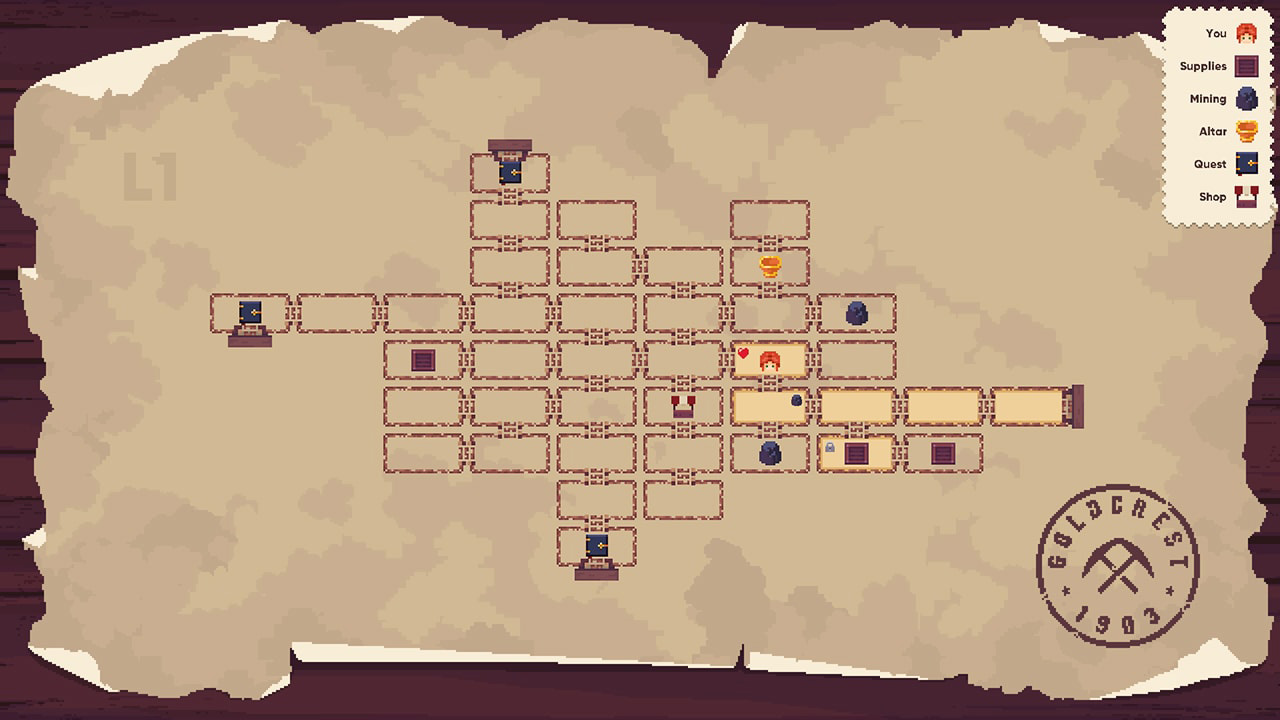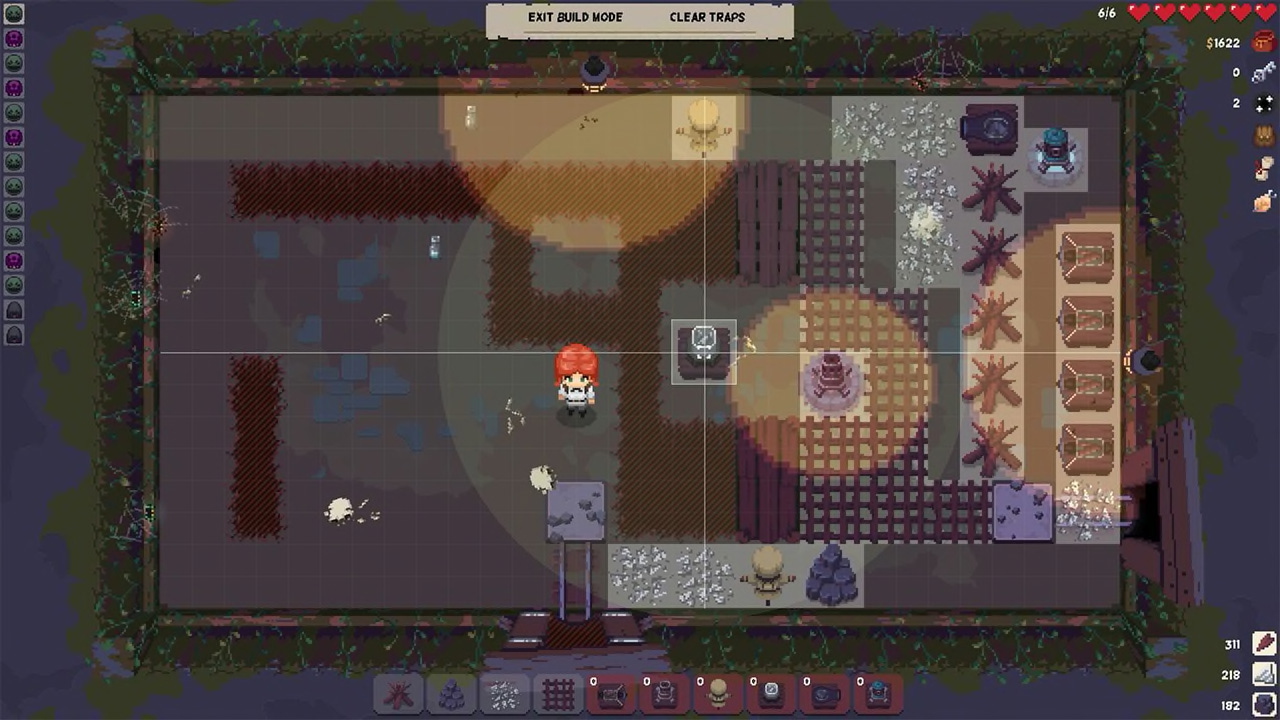"Fate has no mercy down in the mine."
Welcome to the Tunnel of Doom. Please keep your hands and feet in the ride at all times, and listen to the instructions of the creepy little dude who looks like he doesn’t have any eyes—he may be more helpful than you think.
So, let’s get the genre thing out of the way. Everyone is keen to point out this game is a combination of rogue-lite and tower defense. I like both of those types of games, and while Tunnel of Doom is a mash-up of these two game types, it isn’t quite the groundbreaking, never-thought-of sort-of-thing you may be led to believe. Don’t get me wrong; it is a good combination, but it doesn’t seem to be as well executed as it could have been.
Let’s explore the ups and downs. The premise is that you’re going into a mine to rescue your sweetie and some other miners from some unknown danger. You are armed with a pickaxe and one amulet.
This brings up one of the simultaneously pro and con elements of the game—each time you have to start over at the entrance to the mine, you get to choose one of three amulets. They each do something interesting, and they are not the same three choices each time you start over. This sort of random shuffle is part of the game throughout.
As you might expect, there is a map of the mine chambers at your disposal.
When you first enter the mine, you will see messages letting you know the mine is being laid out, spiders are being added, etc. The set of mine chambers is randomly generated with each restart, so there are no learning patterns to get through static challenges; you have to think through every pass. Additionally, each time you enter/re-enter a chamber, there is a chance it will generate an active battle scenario. In that case, you can’t leave until you defeat the baddies. This helps you gain experience, but it can become a bit of a grind to have to repeatedly clear a chamber. Doing so takes resources, and there’s not much resource gain after battle. If you defeat adversaries, there is a chance the game will drop some health for you. On the upside, you can leave the hearts where they drop and come back to them when you need them. On the downside, going back to a chamber to collect some health may result in having to go through a battle scenario again. This is a bit annoying when you are trying to clear a level and actually make some gains.
Speaking of making gains, as you accumulate gold (which happens painfully slowly early on) you can buy extra weapons and defenses. You can use the goodies in your arsenal to create barricades, lay out damaging glass shard patches, and set up wood/stone/glass cannons to take out the baddies.
Tunnel of Doom will show you a list of the number and type of baddies you will face—these show up as small icons at the upper left of the screen. The game will also show you all the points of entry so you can play your defenses. If you gain enough resources, you can lay out some nifty defensive positions. In this regard, Tunnel of Doom resembles a tower defense, but it isn’t quite a classic tower defense, really. Part of the game’s limitation is the relatively small scene size. With limited room in the scene, there is only so much you can do, and the things you can do come from a limited set of options. The game gets a bit monotonous and starts to feel like an uninspired dungeon crawl with only one person in the party.
The graphics are also a bit less than stellar. The pixelated look can be forgiven, and the dark environment of the mine setting is expected, but the visuals are a bit bland. The soundtrack is easy to disregard; it isn’t annoying, but it isn’t very interesting, either. The game controls are easy enough to use, but you have to be careful to make sure your player is facing the right way when you want to engage in melee combat.
Not everything is really all that bad with Tunnel of Doom, but it isn’t all that great, either.
Review: Tunnel of Doom (Nintendo Switch)
Fair
As an action/rogue-lite hybrid, Tunnel of Doom offers plenty of playtime and random arrangements to provide some uncertainty and challenge (no simple pattern memorizing). It’s hurt by little variety, almost no story to engage the player, and limited visuals, but it isn’t a bad option if you want a game to while away some time in darkened mine tunnels.






